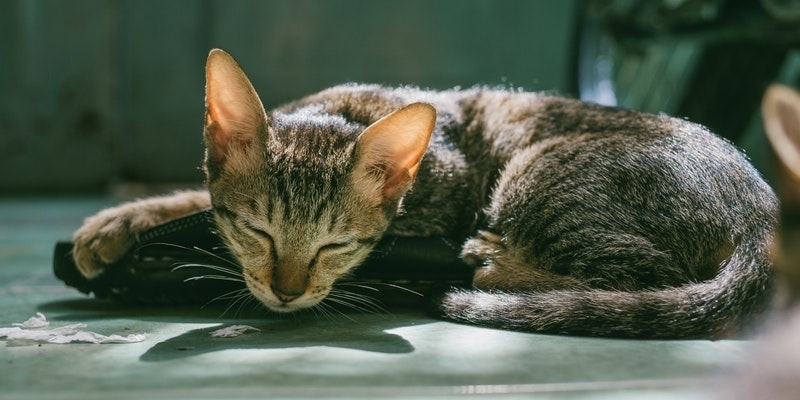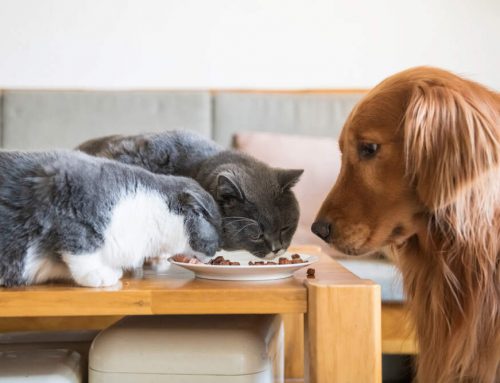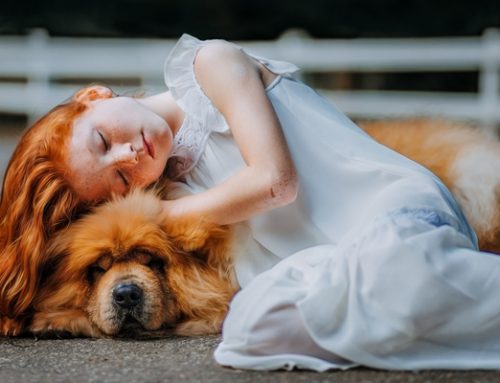You know you have the dog or cat of your dreams, but have you ever wondered if they dream about you?
Though they get more time to lie around during the day, dogs and cats progress through the same sleep cycles as humans. But what is known about the subject of their motionless motion pictures? Dreaming is said to occur during rapid-eye-movement (REM) sleep, the deepest and most restful part of the sleep cycle. Find out what stories captivate your dog or cat when they hit the hay.
What do dogs and cats dream about?
Neuroscientists have worked to uncover what dances through canine and feline dreams for the better part of a century. Throughout the 1960s, medical journals began to pick up more insight on the connection between dreaming and movement during sleep in humans. This inspired them to use physical movement as a tool to peer into the dreams of test subjects and determine how dreaming works.
Much of the insight derived from this early period was later applied to studies in animals. In 1965, French scientists discovered that removing part of the brain stem prevented the paralysis associated with the REM stage. This practice allowed them to observe the cat’s movements during deep sleep. Their studies showed that sleeping cats behave similarly to their waking hours, with movements such as staring at unknown objects and stalking prey.
In 2001, researchers at the Picower Institute for Learning and Memory at MIT conducted one of the most precise studies on dreams in animals to-date. In the first part of the study, scientists Matthew Wilson and Kenway Louie monitored the neural activity of rats while they ran through a maze. Later, the same neurons displayed almost identical activity while the subjects slept. The data was so precise, in fact, that researchers could infer which part of the maze the rats had reached at a certain time during REM sleep.3
From both studies, researchers surmised that animals may dream of the doldrums at work and other familiar surroundings, much like humans.2 If your sleepy cat or dog is on a diet of AvoDerm Natural® pet food formulas, they might even relive their favorite meal in their sleep!
Should I worry if my pet moves in their sleep?
If you’re the owner of a new puppy or older dog, you may have observed them twitching while in deep sleep. This natural occurrence returns us to the first animal dreaming experiment in 1965, involving the brain stems of cats. The pons, which is part of the brainstem, controls breathing and communication between parts of the brain. It has also been linked to the ability to dream in humans. This part of the brain is underdeveloped in puppies and less efficient in older dogs, leading to irregular movement during sleep.
Cats are crepuscular animals, meaning that they are most active in the twilight hours of dusk and dawn.4 Your pet cat may sleep anywhere between 12 to 16 hours per day. And if that weren’t strange enough, you may have seen them twitch in their sleep as well. The truth is, cats never venture far from sleep, and their twitching is merely a sign of their consciousness being closer to waking at certain points in their sleep cycle.
Hopefully, now you have a better sense of the dreams that hold your pet’s attention as he or she rests. Make sure their next meal is one for the books by starting your dog or cat on an AvoDerm Natural® diet.
SOURCES
- Burke, Anna. “What Do Dogs Dream About? – American Kennel Club.” American Kennel Club, 22 Aug. 2017.
- Goldman, Jason G. “Future – What Do Animals Dream about?” BBC News, BBC, 25 Apr. 2014.
- Langley, Liz. “Do Animals Dream?” National Geographic, National Geographic Society, 8 Sept. 2015.
AvoDerm Natural® is a registered trademark of Central Garden & Pet Company.





